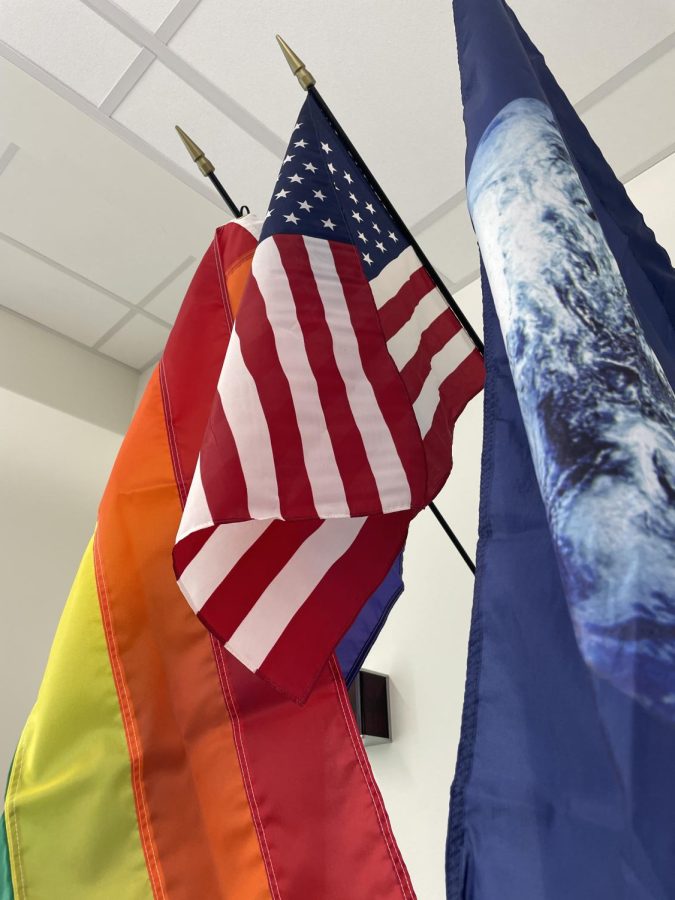American flags now fly in all classrooms
Flags now hang in every classroom in Lincoln’s new building. Some teachers have chosen to add additional flags. One classroom has a pride flag, the American flag, and a flag of Earth.
September 16, 2022
In 2013, the Oregon House Education Committee passed Bill 3014, requiring a US flag in each classroom as well as a time for students to recite the pledge of allegiance. In the old Lincoln building, this law was not enforced, but in the new building it is. The opportunity to pledge allegiance is during passing periods and warm ups in class, just as it was in the old building.
Principal Peyton Chapman provided clarity on the flags.
“There was never a budget for [the flags], and the bond [for the new building] did fully cover all mandated purchases to meet the Portland Public Schools ed specs and state requirements,” said Chapman.
While the American flag is required, teachers have the option of adding other flags.
“I think if there are multiple flags, it’s a reminder of our current geopolitical systems, and that prompts thinking, which I’m always for,” said Chapman.
Constitution Team teacher Patrick Magee-Jenks flies the American flag in his classroom in compliance with the Oregon state law. He also has a Cuban flag. However, he would like to see a more diverse selection of flags represented in his classroom and throughout the school.
“I would like to have a lot more flags in here because it’s important to represent the homelands of the diversities of our student body and our faculty,” said Magee-Jenks.
He also believes that teachers should have the choice to put up the flag.
“As professionals who create welcoming, inclusive, thoughtful classrooms, we should always have the choice of what goes up and what doesn’t.”
Senior SV Jimena is from the Philippines and immigrated to America to study and experience life here.
“My initial thought was that it was okay… and that it was pretty natural for American flags to be in the classrooms,” she said. “Once I thought about it more, I started realizing that it does not have to be like that all the time, especially when the teacher that runs the classroom does not identify as American.”
Jimena believes that there should be a choice in flying the flag, but she doesn’t view the flag as a negative influence on her learning environment.
“As an international student I admire the flag not because it’s encouraging me to assimilate but because it is a sign of my respect towards this country,” said Jimena.
Magee-Jenks also notes the complexity of meanings associated with the American flag.
“There’s a lot of baggage in history with the American flag. A flag is ultimately a symbol, it’s a sign that we attach meaning and significance to,” said Magee-Jenks. “Some of those things are, I think, neutral, some of them are positive, and some of them are negative.”






Kelly Stacks • Feb 12, 2024 at 8:49 pm
This is The United States of America. Our Constitution, laws and its flag are part of the founding of this country. Those who have come here from other countries must respect and abide by our laws, rules and yes; Constitution. Rights are not privileges, they are part of the framework of America and its!